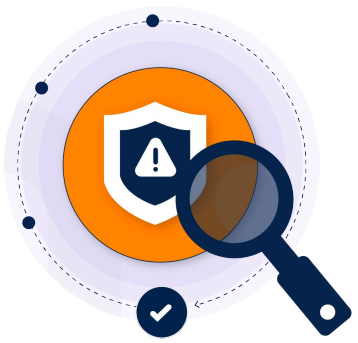Governance, risk, and compliance (GRC) is a comprehensive strategy that integrates three critical areas into a unified approach to ensure that an organization operates ethically, manages risks effectively, and complies with applicable laws and regulations.




The OCEG coined the acronym “GRC” as a shorthand reference to “the critical capabilities that must work together to achieve "Principled Performance” — capabilities that “integrate the governance, management, and assurance of performance, risk and compliance activities.”
OCEG’s definition asserts that “all roles must work together to achieve Principled Performance. This includes the work done by departments like governance and strategy, risk management, internal audit, compliance management, HR, IT, and security.”
Learn About
- What is GRC?
- Why do organizations need GRC?
- The importance of GRC for enterprises
- How Hyperproof makes GRC easier for enterprises
- Understanding what makes an effective GRC program: The Hyperproof GRC Maturity Model
- Building up GRC capabilities from scratch: 5 key steps
- GRC tools and software
- GRC and cybersecurity
- Hyperproof's role in cybersecurity
- Governance, Risk, and Compliance (GRC): Frequently Asked Questions (FAQ)
- Elevate your GRC program with Hyperproof
High-performing organizations
Regardless of the type or size of organization you lead or work for, we can all agree there is a universal set of positive outcomes that all organizations want to achieve. High-performing organizations share a common set of traits with one another:
- They achieve their business objectives
Organizational leaders ensure that all parts of the company work together to achieve business objectives. - Positive culture
The culture inspires high performance and promotes accountability, trust, integrity, and communication. - Stakeholder trust is high
Stakeholders — including customers, employees, board, investors, and partners — trust that the organization is doing the right thing and heading towards a promising future. - Adequately prepared for an uncertain future
High-performing organizations are adequately prepared to address risks and shifts in regulatory requirements and have the ability to bounce back from adversity. - Motivate and inspire desired conduct
The culture and the rewards system encourage employees to behave ethically, especially in the face of challenging circumstances. - Agility
These organizations can quickly pivot in the face of new information while avoiding obstacles and pitfalls. Because the organization is responsive, they can outflank their competition. - Optimize economic return and values
These organizations allocate staff and financial resources in a way that maximizes the economic return generated for the organization while fulfilling the organization’s corporate social responsibility goals.
In short, high-performing organizations are able to reliably achieve their business objectives while managing uncertainty and acting with integrity.

